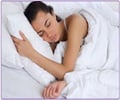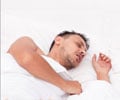New study examined the effect of untreated sleep apnea on health care utilization and costs among Medicare beneficiaries.

‘Early diagnosis and treatment could benefit sleep apnea patients. Personalized treatment options can improve outcomes and reduce costs associated with sleep disorders.’
Read More..




Compared with the control group, those with untreated sleep apnea had greater health care utilization and costs across all points of service, including inpatient, outpatient, emergency and prescription medications in the year leading up to their sleep apnea diagnosis.Read More..
Researchers at the University of Maryland and Columbia University also observed that Medicare patients with sleep apnea were more likely to suffer from other ailments than those without the sleep disorder. Sleep apnea is linked to an increased risk for high blood pressure, diabetes, heart disease, stroke and depression.
The study authors suggest that insurers, legislators and health system leaders consider routine screening for sleep apnea in older patients, especially those with medical and psychiatric comorbidities, to better contain treatment costs.
"Sleep disorders represent a massive economic burden on the U.S. health care system," said lead author Emerson Wickwire, Ph.D., associate professor of psychiatry and medicine at the University of Maryland School of Medicine, and director of the insomnia program at the University of Maryland Medical Center - Midtown Campus.
"Medicare beneficiaries with obstructive sleep apnea cost taxpayers an additional $19,566 per year. It’s important to realize that costs associated with untreated sleep disorders are likely to continue to accrue year after year, which is why our group focuses on early recognition and treatment."
Advertisement
A 2016 report commissioned by the American Academy of Sleep Medicine estimated that undiagnosed sleep apnea among U.S. adults costs $149.6 billion annually. While the report projected it would cost the health care system nearly $50 billion to diagnose and treat every American adult with sleep apnea, treatment would produce savings of $100 billion.
Advertisement
"The good news," explained Dr. Wickwire, "is that highly effective diagnostic and treatment strategies are available. Our team is currently using big data as well as highly personalized sleep disorders treatments to improve outcomes and reduce costs associated with sleep disorders."
In a related commentary also published in the January JCSM, Meir Kryger, M.D., applauds the study’s authors for their analysis of the economic impact of sleep apnea among older adults, highlighting the need for early diagnosis and treatment.
He notes that the findings confirm that sleep apnea patients are heavy users of health care five to 10 years before diagnosis of sleep apnea and echoes the researchers call for improved sleep apnea detection and screening.
Source-Eurekalert












